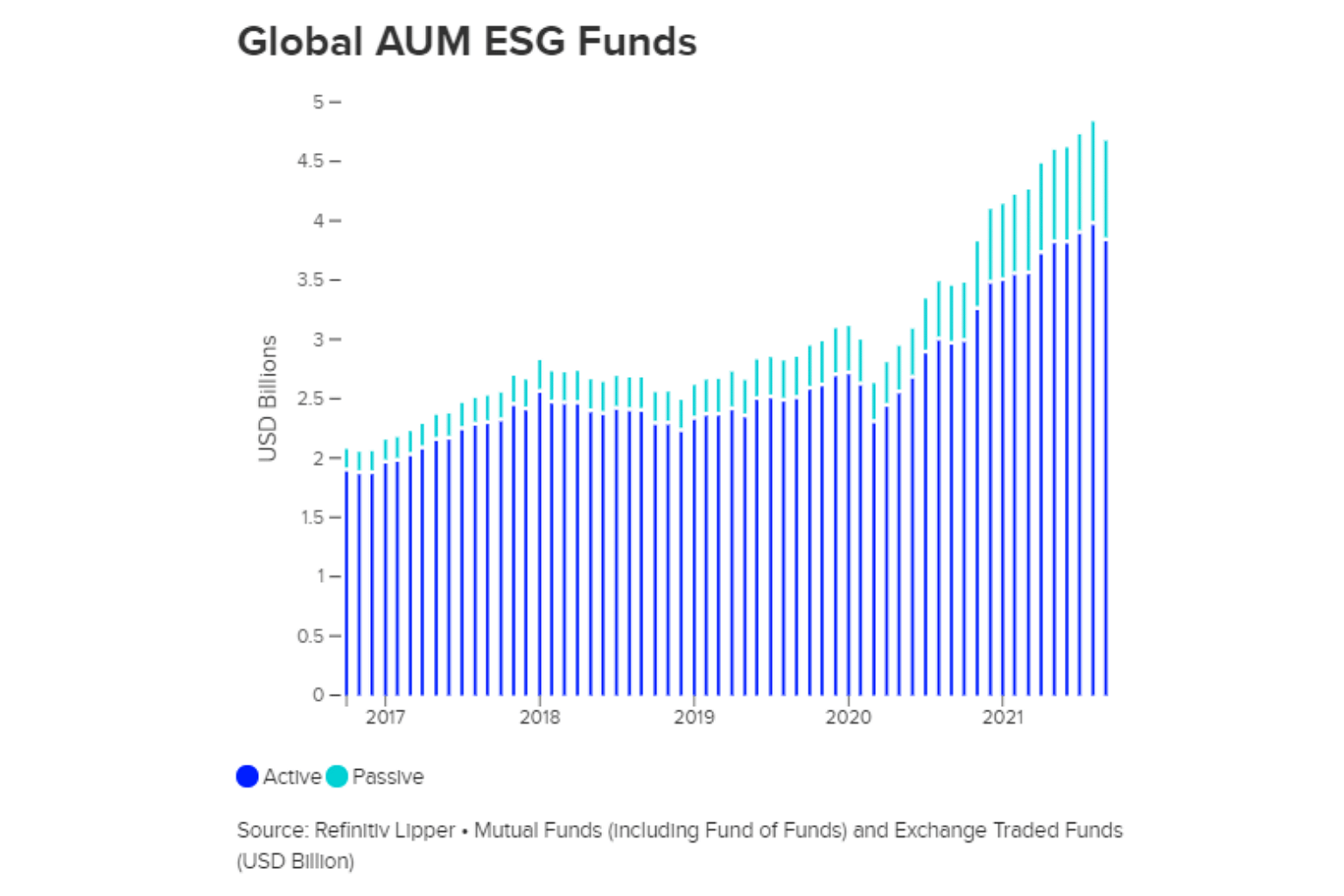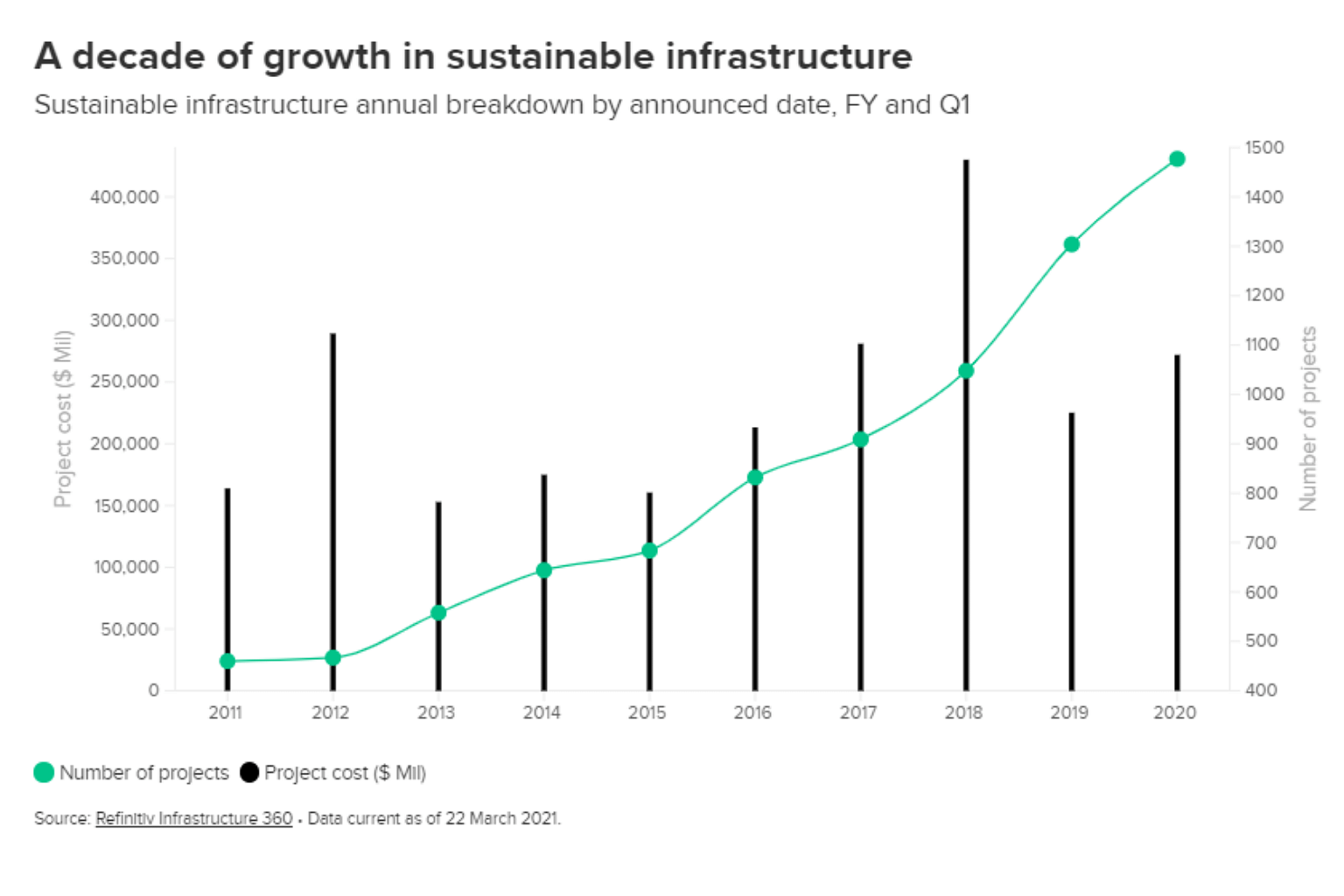After the UN climate conference known as COP26 in Glasgow, Scotland, we expect to see continued high-profile announcements of new electric vehicle adoption targets, plans to phase out coal power as well as pioneering corporate environmental, social and governance (ESG) initiatives.
COP26 promises to unlock important insights on the role of financial markets, infrastructure investment and development as well as future adaptations that will be necessary in the transition to net zero.
To shed some light on the current state of affairs across these varied, but highly connected themes, Refinitiv has developed a by-the-numbers breakdown of the cross-cutting issues that were discussed at COP26.
Among our major findings:
-
As the world continues to focus on the topic of sustainable investing, data accuracy, consistent disclosures and standardisation around ESG reporting will be essential for investors.
-
The data shows a trend towards reduced global reliance on fossil fuels, but persistent use of oil and gas raises questions about whether broad-based climate goals are attainable.
-
A “green crime” global network of poachers, illegal loggers and waste traffickers has created an extremely lucrative industry exploiting natural resources.
-
Refinitiv’s data-driven approach to COP26 includes statistical insights on finance, energy, “green” crime and infrastructure.
Finance
Investors now are much less likely to disregard ESG risks, or maintain that these are outside their fiduciary duties. Our data shows that 43 per cent of compliance and risk professionals indicate that the pandemic has increased the importance of ESG factors for their companies.
ESG investing has skyrocketed and ESG funds have been outperforming non-ESG funds in seven of the last 10 years. Total assets under management in global ESG-related mutual funds and exchange-traded funds (ETFs) reached a record US$4.7 trillion (S$6.4 trillion) in the second quarter of this year.

“Green” bonds that are financing products specifically designed to support climate- or environment-related projects raised US$365 billion in the first three quarters of this year.
It is clear that accurate data is the bedrock of the ESG challenge. If investors are to assess the climate risk or opportunity of a particular asset, they need climate-related data that is complete and presented in a way that is comparable. They require data that is comprehensive across all industries and countries, whether it is data for investors, or for companies listed in capital markets.
Energy
Much like the trend in ESG-related investment vehicles, renewable energy sources have become a topic of great investor interest and steadily increasing scrutiny.
The 12-month forward price-to-earnings ratio for global alternative, or renewable, energy companies is currently 32.4x current earnings. That compares with a forward P/E ratio of 11.9x for the traditional global oil and gas index.
While intense focus is on renewable sources, research shows that industries such as maritime shipping are still relying on fossil fuels, and the cost of CO2 emissions continues to rise. According to the Refinitiv Carbon Market Survey, higher price expectations in key markets are making the cost of CO2 a crucial factor in investment decisions.
“Green” crime
The criminal exploitation of natural resources around the globe is estimated to be worth a startling US$256 billion annually. The UN and Interpol cite wildlife crime as one of the world’s top five most lucrative illicit activities.
Here again, data is central to addressing the challenge. The criminal networks behind these environmental crimes often use legal business structures and complex business ownership models to obscure their illegal activity.
Their ability to do this is often made easier by lax approaches to due diligence. Refinitiv research shows that 43 per cent of third parties are not subject to due diligence checks and 60 per cent of respondents are not fully monitoring third parties for ongoing risks.
COP26 delegates who are serious about finding a solution will be eager to use vast data sets and powerful analytics to root out green crime.
Infrastructure
The trend driving sustainable infrastructure investment has the power to create an entirely new asset class and fix many of the root causes of climate change along the way.
Major world economies and some of the largest institutional investors are reimagining utilities, transportation networks and city centres as efficient, sustainable resources. This could be the precipice of a sustainability revolution.
According to projects tracked by Refinitiv, in 2020 alone, US$272 billion was invested in sustainable infrastructure projects, nearly double the levels seen a decade ago. The largest growth has come from wind projects, where US$55.3 billion was pumped in last year. Globally, roughly 35 per cent of all new infrastructure projects announced last year were sustainable, up from just 10 per cent a decade ago.

The stakes are high at COP26 – literally life and death. New research from Refinitiv is developing context by analysing the efforts of every major country to reduce national emissions and weather the effects of climate change.


